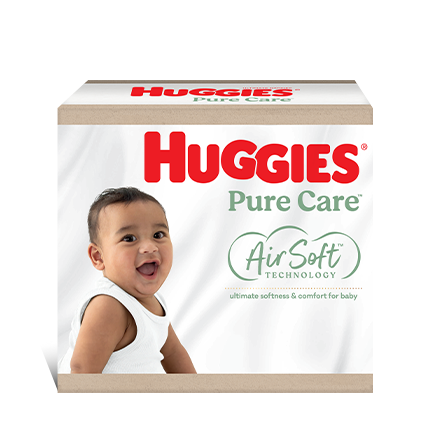Eclampsia is a serious condition which can occur in mothers when preeclampsia becomes uncontrolled or does not resolve. In the developed world, this is a condition which is rarely seen as most cases of escalating preeclampsia are detected before they get to this point. However, it is still estimated that around 1 in every 2,000-3,000 pregnant women will become eclamptic. Eclampsia is very rare before the 20th week of pregnancy, with most cases occurring between weeks 20-31.
Eclampsia is classified as an obstetric emergency, where the well-being of a mother and her baby are potentially compromised. It can also be life threatening, so immediate access to an obstetric hospital and specialist medical care is a priority.
Signs of Eclampsia
- Elevated blood pressure.
- Coma or seizures; these are the defining signs of eclampsia.
- Fitting and convulsions which are occurring when there is no pre-existing diagnosis of having a brain condition, such as with epilepsy.
- Kidney failure.
- Signs of foetal distress where the baby's heart beat reduces from a normal rate.
- Low platelet count.
- The mother experiencing severe agitation and restlessness.
- Having muscular aches and pains.
It is possible for some mothers to develop signs of eclampsia without having all the symptoms of preeclampsia first. Other than an elevated blood pressure, there may be no indications beforehand which cause concern. Even after the baby is delivered, some women will have post-partum seizures and require close observation and medication to stop them fitting.
What Happens in Eclampsia?
In cases of eclampsia, the mother's blood vessels go into spasm and are unable to transport oxygen and nutrients to her own body and to her baby. Vital organs such as her liver, kidneys and brain are compromised with a reduction in their normal blood flow and are unable to function effectively. Fitting is common because the brain is starved of oxygen.
Risk Factors for Developing Eclampsia
- More common in very young pregnant women and those over the age of 35 years.
- Eclampsia is more common in women who are having their first pregnancy Primigravidas.
- Women who live in lower socio economic areas where there are other risk factors such as poor nutrition and compromised access to health care. This may also be because early detection of preeclampsia is not as easily achieved.
- Genes are thought to play a role, though exactly how or why is not well understood.
- For some women, the structure and function of their brain and nervous system, though exactly how is again not entirely clear.
- Maternal diet, in particular poor nutrition.
- Being of African American descent.
- Having a pregnancy which is already being impacted by complications such as hypertension, diabetes or instability.
- Carrying a multiple pregnancy such as twins, triplets or more.
Warning Signs for Developing Preeclampsia
- The development of visual disturbances, such as seeing flashing lights or having blurred vision.
- A consistently high blood pressure.
- Abnormal readings on blood tests.
- Having a headache which does not resolve.
Treatment for Eclampsia
The primary issue with treatment for preeclampsia begins with prevention in the first place. Early diagnosis through monitoring every pregnant woman during their ante-natal period helps to detect problems early. Checking urine for the presence of protein, watching that her blood pressure is stable and not high, in particular the diastolic or bottom reading, and being observant for fluid retention will all help to flag problems.
- Bed rest, with or without toilet and shower privileges, is sometimes recommended.
- Hospitalization is usually necessary when eclampsia has been diagnosed.
- Monitoring the foetal heartbeat and growth. Sometimes foetal heart tracing Cardiotocograph (CTG tracing) is done. Ultrasounds are a sound and effective diagnostic tool for assessing foetal growth and development.
- Monitoring the mother's blood pressure. Antihypertensive medication is often prescribed to lower the blood pressure to within normal, safe limits.
- Diuretic medication may also be prescribed to help rid the body of excess fluids and reduce overall swelling.
- Anti-convulsant medication may be prescribed in cases of fitting. The most commonly used drug is Magnesium Sulphate.
In severe cases of eclampsia, the only effective treatment is stabilisation of the mother and to stop her fitting. Oxygen and anti-convulsant medication is given to maximize the flow of oxygen to her brain and to the baby. Immediate delivery of the baby by caesarian section is performed, even if this means it will be premature.
Complications of Eclampsia
- Placental abruption is a major risk with both preeclampsia and eclampsia.
- Premature delivery of the baby and the associated risks with this.
- A blood clotting disorder called Disseminated Intravascular Coagulation (DIC) can occur.
- In extreme cases, death of the mother and or her baby may happen. But with careful monitoring and specialist care the likelihood of this is extremely small.
The overall aim of eclampsia management is to reduce the risk of harm to the mother and her baby. If possible, delivery of the baby by caesarian section is deferred until 32-34 weeks of gestation in cases of severe eclampsia. When it is assessed to be mild, then delivery is often held off until 36 week or beyond. Balancing the risks of eliminating maternal harm with infant prematurity is the most important factor in eclampsia management.
Remember
It is important to attend each ante-natal appointment as recommended by your midwife or doctor -even if you feel and look well. Preeclampsia and eclampsia are not always detectable other than through blood pressure readings and urine testing.
Last Published* May, 2024
*Please note that the published date may not be the same as the date that the content was created and that information above may have changed since.





















